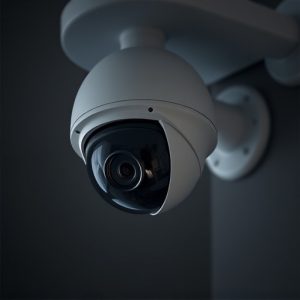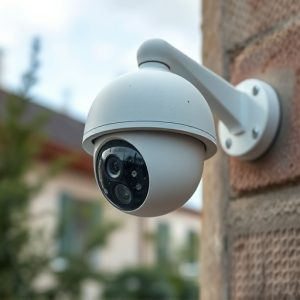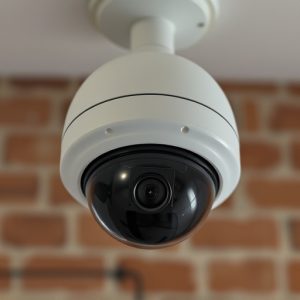Fake Security Mounts: Indoor Cameras, Dome vs Bullet, & Best Practices
Understanding the Indoor Fake Dome Bullet Differences between genuine and synthetic security camera…….
Understanding the Indoor Fake Dome Bullet Differences between genuine and synthetic security camera brackets is crucial for effective home protection. Genuine brackets offer durability, weather resistance, and specific camera compatibility, ensuring secure installations and preventing equipment shift. Recognizing these differences guides informed purchasing decisions, maintaining surveillance system integrity. Indoor cameras, like dome and bullet types, enhance safety with discreet monitoring (dome) or flexible mounting (bullet), catering to diverse needs and decor. Choosing the right mount based on aesthetic preferences, durability, adjustability, and anti-theft features optimizes performance and realism, protecting spaces from theft and intruders.
“In the realm of home security, visual deterrents play a crucial role. This guide delves into the world of fake security camera mounting brackets, exploring their ‘indoor fake dome bullet differences’. Understanding these variations is essential for selecting the right fit for your space. From dome to bullet cameras, this comprehensive article guides you through key features and common applications. By the end, you’ll be equipped to make informed decisions, ensuring your home remains a safe haven.”
- Understanding Fake Security Camera Mounting Brackets: A Comprehensive Guide
- Indoor Security Cameras: The Role of Dome and Bullet Cameras
- Unveiling the Differences Between Fake Dome and Bullet Mounts
- Key Features to Consider When Choosing a Fake Mounting Bracket
- Common Applications and Best Practices for Using False Camera Brackets
Understanding Fake Security Camera Mounting Brackets: A Comprehensive Guide
Fake security camera mounting brackets are a common sight, but understanding their differences from genuine ones is crucial for effective home protection. While authentic brackets provide secure and discreet installations, their synthetic counterparts often lack quality and reliability. These fake mounts may look similar at first glance, but they typically differ in key aspects like durability, weather resistance, and compatibility with various camera types.
Indoor Fake Dome Bullet cameras, for instance, require mounting brackets designed to accommodate their unique shapes and weight distribution. Genuine brackets are engineered to ensure stability and prevent camera shift, enhancing the overall security of your property. In contrast, inferior fake mounts might wiggle or distort over time, compromising the integrity of your surveillance system. Recognizing these Indoor Fake Dome Bullet differences is essential for making informed decisions when purchasing security equipment.
Indoor Security Cameras: The Role of Dome and Bullet Cameras
Indoor security cameras play a pivotal role in enhancing home or business safety, offering both deterrence and evidence collection capabilities. Among the various types available, dome and bullet cameras stand out due to their distinct features. The indoor fake dome bullet differences are primarily evident in design and placement. Dome cameras, with their rounded, often semi-transparent housing, provide a more discreet presence, making them ideal for spaces where aesthetics matter or where direct visibility might attract unwanted attention. In contrast, bullet cameras boast a sleek, cylindrical shape that allows for flexible mounting options and wider angle coverage, making them suitable for larger rooms or open spaces.
While both serve the core function of monitoring indoor areas, the indoor fake dome bullet differences in appearance and placement considerations influence the choice based on specific needs. Homeowners or business owners must weigh these factors to select cameras that not only meet their security requirements but also blend seamlessly into their existing décor.
Unveiling the Differences Between Fake Dome and Bullet Mounts
When it comes to indoor security camera mounting, understanding the differences between fake dome and bullet mounts is essential for effective placement and deterrence. Fake dome cameras are designed to blend seamlessly into their surroundings, often mimicking the appearance of light fixtures or ceiling fans. These discreet mounts are ideal for homes or businesses aiming to maintain a tidy, unobtrusive aesthetic while still enjoying enhanced security. In contrast, bullet mounts feature a more visible design, with a camera body resembling a bullet shape, attached to a robust bracket. This style is commonly chosen for outdoor applications where deterrence and clear line-of-sight are paramount, but they can also be used indoors for areas requiring an even more prominent display of surveillance technology.
The indoor fake dome and bullet differences lie primarily in their visual impact and intended use. Dome cameras offer a subtle approach, allowing for strategic placement to monitor various indoor spaces without drawing attention. Bullet mounts, on the other hand, serve as a bold statement of security presence, suitable for high-risk areas or as a psychological deterrent in open, bustling spaces. Each type serves its unique purpose, catering to different security needs and aesthetics preferences.
Key Features to Consider When Choosing a Fake Mounting Bracket
When selecting an indoor fake security camera mounting bracket, consider its key features for optimal performance and realism. One crucial aspect is the design—choose between dome or bullet shapes, each offering distinct advantages. Dome brackets provide a subtle, seamless appearance, ideal for discreetly monitoring indoor spaces, while bullet designs mimic authentic security cameras, adding a layer of realism to your setup.
Additionally, material quality matters; opt for durable, high-grade plastics or metals to ensure longevity. Adjustable mounting options are essential for customization, allowing you to position the bracket precisely where needed. Anti-theft mechanisms can also be beneficial, providing added security against theft or damage, especially in accessible areas.
Common Applications and Best Practices for Using False Camera Brackets
Fake security camera mounting brackets, also known for their indoor fake dome bullet differences, serve multiple purposes beyond enhancing aesthetic appeal. They are commonly used in retail stores to deter theft and create a sense of security, even when actual cameras aren’t present. In residential settings, these brackets can dissuade potential intruders by making it appear as if advanced surveillance systems are in place.
Best practices for using false camera brackets include positioning them strategically near high-value items or entry points. Unlike real cameras, fake ones don’t require complex wiring or power sources, making them easy to install almost anywhere. Regularly cleaning and dusting the brackets helps maintain their realistic appearance. Additionally, mixing genuine and fake cameras can create a layered security effect, further deterring would-be thieves.
In light of the above discussions on indoor fake dome and bullet security camera mounting brackets, it’s clear that understanding the differences and key features is essential for effective surveillance. By choosing the right fake mount, you can discreetly enhance indoor security without compromising aesthetics. Remember that, whether you opt for a dome or bullet design, proper placement and best practices ensure optimal performance and peace of mind.


